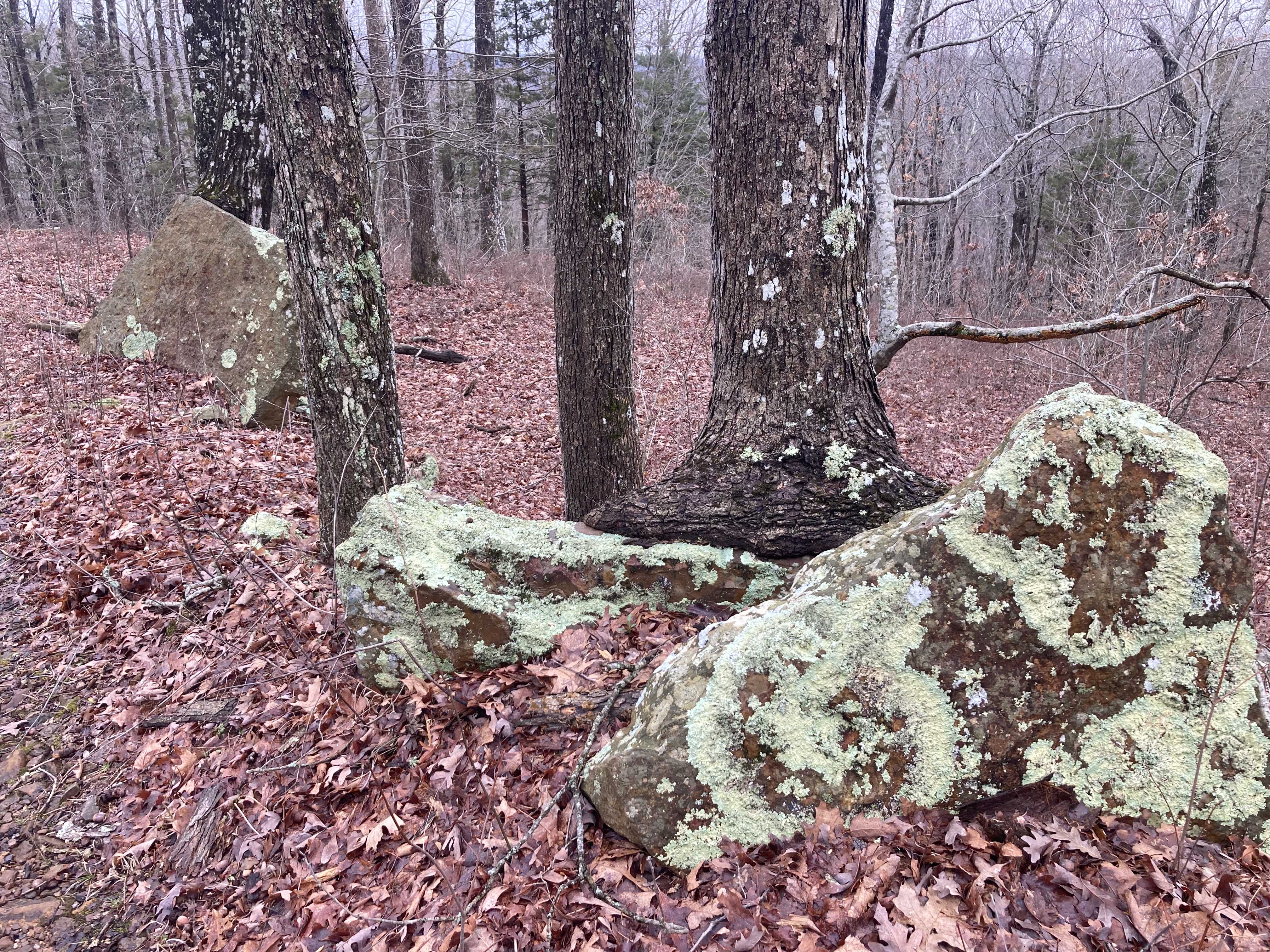Lichens
Contact
University of Arkansas System Division of Agriculture
Cooperative Extension Service
2301 S. University Ave.
Little Rock, AR 72204

Lichens
We see them everywhere we turn, but few of us know much about lichens. These little blobs of protoplasm don’t conveniently fit into our simplified view of nature for they are a comingled life form containing species from two or three of the basal kingdoms of life – fungi and really primitive photosynthesizing cells. The fungi species – the dominant partner in the symbiosis – is essentially “farming” the single celled organisms and living off of the nutrients manufactured during photosynthesis.
Two broad types of photosynthesizing organisms are found in lichens; the cyanobacteria (formerly known as blue-green algae) and single celled green algae. Evolutionarily speaking, these two groups are very different. The cyanobacteria are more primitive, perhaps as old as 2.7 billion years old, and do not contain a nucleus. As a eukaryote, the green algae are more modern and have a cellular nucleus. A number of different fungal species have independently evolved the ability to form symbiotic relationships with their photosynthesizing partners and several of these may be combined in an individual lichen colony.
All this mixing, matching, and doubling up makes classification of lichens a challenge. There are thought to be about 250 species found in Arkansas with about 3,600 found in North America. But lichens are difficult to study so nobody holds these numbers to be sacred. DNA analysis is finding new combinations and, in fact, a recent report found a yeast member forming a triad of species making up a horsehair lichen common in Western Canada.
Clues of the symbiotic relationship involved in a particular lichen colony can be found in the way the organism looks when fully hydrated. Green algae associates often have a gray or green-tinged look about them; lichens with a cyanobacteria partner are often brown or black while colonies with both species sometimes have jelly like bodies.
Three common growth forms are found in lichens. The Flavoparmelia (Greenshield) species shown in the accompanying photo have a foliose (leaf-like) growth form that is tightly attached to the substrate but with the margins of the colony held away from the surface. They have a distinct top and bottom side.
The fruticose (shrubby) lichens can have weeping hair-like strands or upright and shrubby growth or have cup-like stalks. Old-man’s beard and reindeer moss are examples with the fruticose habit of growth.
The crustose lichens are the ones seen growing on headstones, stone buildings and on rocks in an exposed location. They form a solid crust on the surface and may be gray, green, orange, yellow or mixtures thereof.
Lichens reproduce vegetatively. They either produce vegetative granules called soredia that are dispersed by wind or water or a portion of the original colony breaks off and finds a new place to grow. The soredia contain cells of the photosynthesizing partner(s) wrapped in a hyphal bundle of mycelium that must find a suitable habitat to reestablish.
Lichens grow in every kind of climate from dry deserts to frozen tundra on rocks, trees and soil. Though they are held in place by firm anchors, these structures are not roots and play no role in absorption. They absorb water and nutrients directly through their outer cortex. When times are good and the colony relatively moist, the mycelial strands become translucent so the algae can photosynthesize more efficiently. But, when growing on a rock as they often are, things dry out quickly and the structure shuts down and goes into a state of quiescence until conditions improve. The growth rate is pitifully slow, usually averaging about one millimeter per year. Though slow, lichens are the first organisms to grow on exposed rock surfaces and start the soil building processes.
